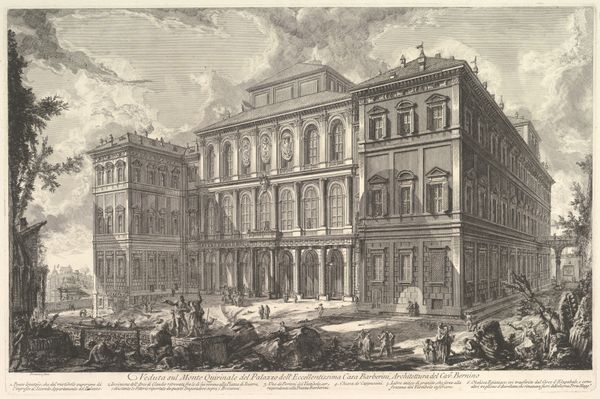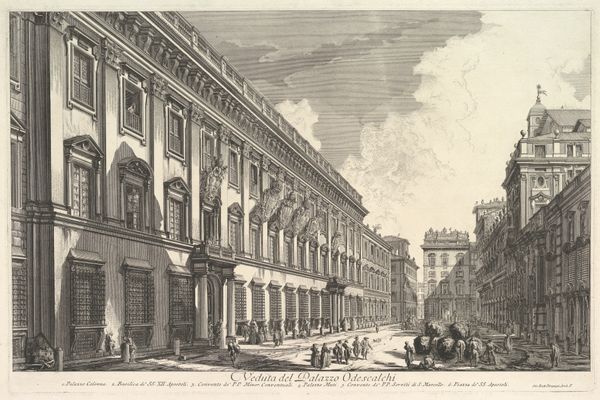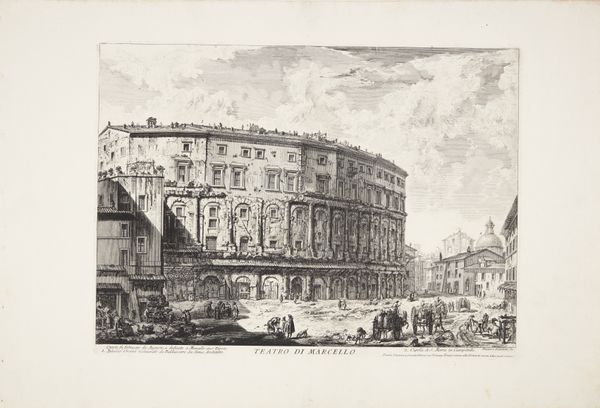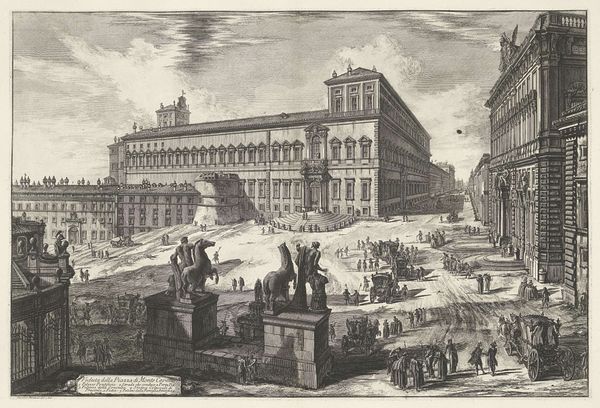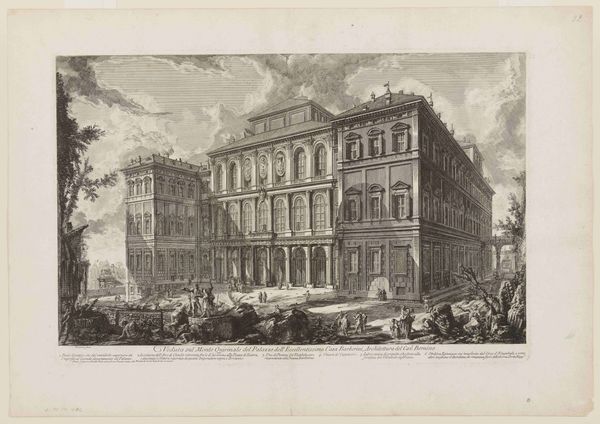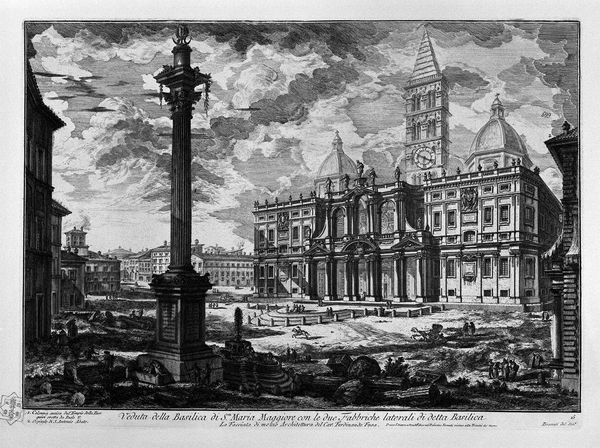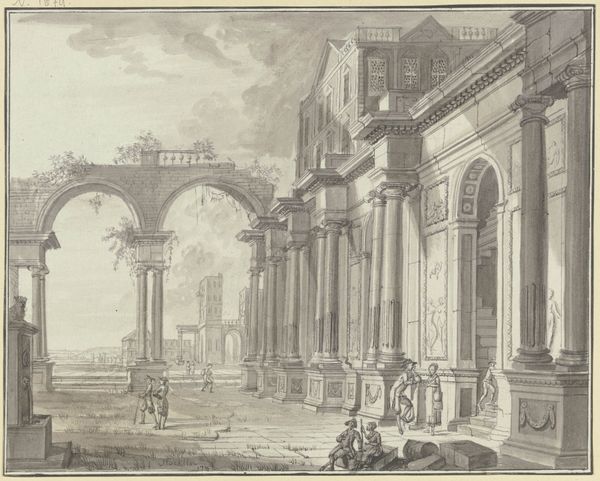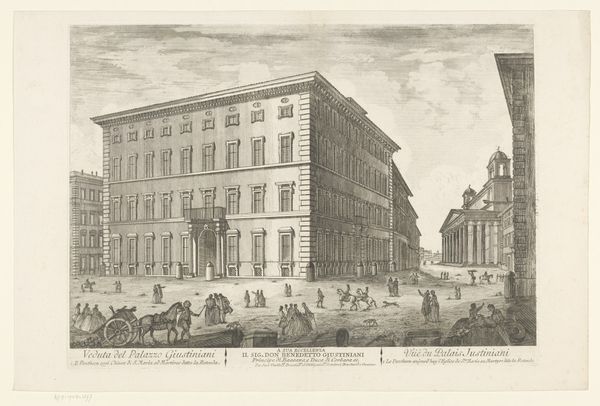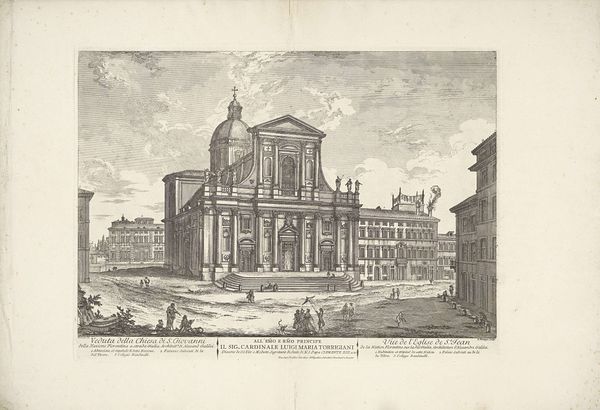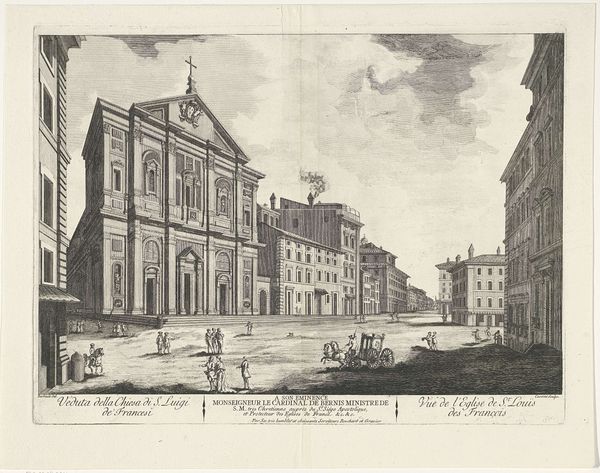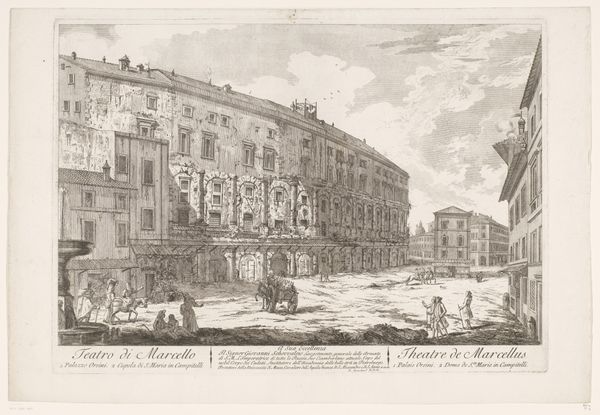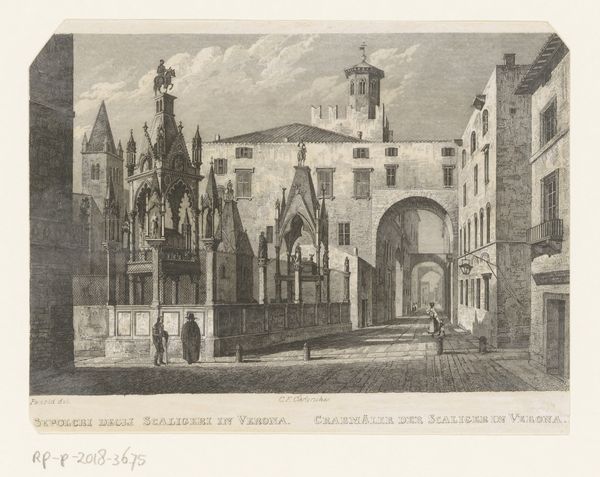![View of the Façade of the Basilica of S. Croce in Gerusalemme [the Holy Cross in Jerusalem], from Vedute di Roma (Roman Views) by Giovanni Battista Piranesi](/_next/image?url=https%3A%2F%2Fd2w8kbdekdi1gv.cloudfront.net%2FeyJidWNrZXQiOiAiYXJ0ZXJhLWltYWdlcy1idWNrZXQiLCAia2V5IjogImFydHdvcmtzLzcxMDMzN2FlLWZlZmYtNGI3ZC1iYWVlLTY1OTdkNzg1NzE4OC83MTAzMzdhZS1mZWZmLTRiN2QtYmFlZS02NTk3ZDc4NTcxODhfZnVsbC5qcGciLCAiZWRpdHMiOiB7InJlc2l6ZSI6IHsid2lkdGgiOiAxOTIwLCAiaGVpZ2h0IjogMTkyMCwgImZpdCI6ICJpbnNpZGUifX19&w=3840&q=75)
View of the Façade of the Basilica of S. Croce in Gerusalemme [the Holy Cross in Jerusalem], from Vedute di Roma (Roman Views) 1745 - 1755
0:00
0:00
drawing, print, etching, architecture
#
drawing
#
baroque
# print
#
etching
#
landscape
#
romanesque
#
cityscape
#
italian-renaissance
#
architecture
Dimensions: Sheet: 21 1/8 x 30 1/8 in. (53.6 x 76.5 cm) Plate: 15 15/16 x 24 3/16 in. (40.5 x 61.5 cm)
Copyright: Public Domain
Giovanni Battista Piranesi's etching presents us with the façade of the Basilica of S. Croce in Gerusalemme, an emblem of Christian faith and Roman architectural prowess. Dominating the Basilica's apex is the cross, a ubiquitous symbol in Christian iconography that represents salvation, sacrifice, and the bridge between the divine and mortal realms. The cross's journey through time is complex. Emerging from early Christian symbolism, it gained prominence following Emperor Constantine's vision, becoming a potent emblem of imperial power and spiritual authority. It's fascinating to observe its diffusion across cultures, where it morphed and adapted, appearing in various forms—Celtic, Greek, Latin—each carrying unique cultural connotations. This symbol, etched into our collective memory, retains its emotional resonance, triggering a subconscious connection to centuries of faith, art, and history. As the symbol has moved across time, it has gone through a cyclical progression, and the cross’s presence in Piranesi's etching highlights how symbols resurface, evolve, and acquire new meanings.
Comments
No comments
Be the first to comment and join the conversation on the ultimate creative platform.

